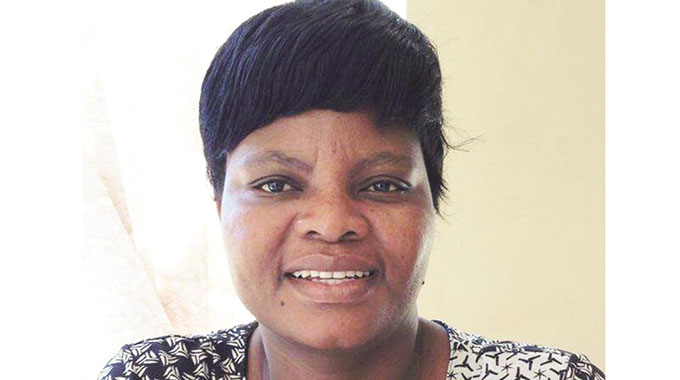Bulawayo youths and shisha smoking: Is it safe ?

Andile Tshuma
SHISHA smoking has taken Bulawayo by storm and shisha bars are the in-thing for many city youths. Youngsters in their early teenage years are also fast getting hooked to the new craze.
A shisha is an oriental tobacco pipe with a long, flexible tube which draws smoke through water contained in a bowl. Various substances can be smoked through a shisha. Shisha is a tobacco product that is smoked communally in a water pipe, narghile or hookah.
Shisha smoking has origins in the Middle East, South East Asia and North Africa. It commonly takes place in a cafe or restaurant setting or other social gatherings over one or more hours.
In Zimbabwe, shisha bars became a hit around 2014 and are becoming more popular in the City of Kings.
A number of shops are selling the shisha pipes, providing a convenience for people who want to smoke the shisha from home or those who want to smoke dangerous substances, away from public scrutiny.
In April 2018 the World Health Organisation condemned shisha smoking at a World Tobacco Conference held in Cape Town, South Africa.
The Arab Health Congress in held Dubai in January, declared the shisha to be 72 times more toxic than cigarettes as it contains substantially higher levels of harmful substances such as arsenic, cobalt, lead, nickel and chromium. The tobacco free version also contains harmful chemicals.
Nowadays youngsters smoke using the hookah or water pipe to inhale flavoured tobacco or to inhale other drugs such as cannabis or an opiate.
It is so fashionable nowadays and youngsters do not seem to be concerned at all about the health implications of getting literally hooked to the hookah pipe.
Like any tobacco smoking, the shisha contains harmful materials such as carbon monoxide, nicotine and lead among others. According to the first international conference on water pipe tobacco research held in 2013, shisha smoking is a worldwide epidemic that needs urgent public health attention. Shisha smoking is a particularly widespread practice among young people.
The fruit and herb flavourings make the shisha seem more benign. And some think that the smoke’s negative effects are reduced because it is passed through water.
Research to date suggests that shisha use among young people is promoted primarily through peer influence, as well as perceived benefits, such as reduced anxiety and entertainment.
Many young people learn to smoke from friends, especially in high school or university. Youth are either taken to shisha cafes by their friends to smoke or they watch their friends smoke at their homes or at school. Shisha use is also promoted through flavoured tobacco products, use of the internet and gaps in implementation of smoke-free policies.
According to research carried out by WHO, the volume of smoke inhaled in an hour-long tobacco cigarette shisha session is estimated to be the equivalent to smoking between 100 and 200 cigarettes.
Speaking at the 17th World Conference on Tobacco held in South Africa, philanthropist and World Health Organisation Global Ambassador, Mr Michael Bloomberg, urged countries to put in place policies that stop the use of tobacco smoking and unregulated distribution of shishas.
He referred to a WHO paper on the dangers of shisha or water pipe smoking which has been grossly marketed as a cleaner and safer alternative to cigarette smoking.
He said the study proved that water pipe smoking was in no way safer than cigarette smoking.
“Using a water pipe to smoke tobacco poses a serious health hazard to smokers and others exposed to smoke emitted. According to the findings, a typical one hour long water pipe smoking session involves inhaling 100 to 200 times the volume of smoke inhales with a single cigarette,” he said.
Mr Bloomberg said another overlooked risk was in the sharing of the water pipe mouthpiece, which posed a serious threat of contracting communicable diseases such as hepatitis and tuberculosis.
In spite of the extreme health risks associated with shisha use, a number of shisha lounges have opened across the city at various popular night spots. The shisha seems to have gained popularity among patrons of popular night spots.
A Bulawayo man, Mr Takudzwa Mandizvidza, a regular patron at a local night spot, said he prefers the shisha as it does not leave him with a stench of cigarette smoke.
“It’s classic, friendly to people around me. I’m not sure whether it’s harmful for my lungs or not but I have heard that it could cause cancer. I can go to a night joint and only spend $10 huffing and puffing and not drink any beer, which is now expensive,” said Mr Mandizvidza.
The shisha is also popular amongst suburban youths and has been a common feature at the infamous vuzu parties held by high school pupils.
The craze in Zimbabwe originated in Harare and has spread to other cities. An online search shows that it is offered in over 20 pubs and restaurants, often referred to as shisha lounges. An upmarket pub in Harare’s CBD offers over 60 flavours of the shisha, more popularly referred to as hubbly bubbly or hookah in the capital. However, before that the water pipe was smuggled into the country by cross border traders. Shisha pipe prices range from $85 up to $400 according to a city survey.
WHO recommended that water pipes and the water pipe tobacco should be subjected to the same regulations as cigarettes and other tobacco products. “Education of health professionals, regulators and the public is urgently needed about the risks of waterpipe smoking including high potential levels of second hand exposure among children, pregnant women and others,” said Mr Bloomberg. The organisation also recommended that misleading labels which implied safety of water pipes must be prohibited. Latest statistics presented at the WHO conference revealed that over seven million people die annually from tobacco use and the majority of deaths are in low to middle income countries.
According to smokers, the shisha is very tempting and enticing and is accompanied by an innocent scent. The specially made tobacco comes in different flavours, such as apple, mint, cherry, chocolate, coconut, licorice, cappuccino, and watermelon.
Using a hookah to smoke tobacco poses serious health risks to smokers and others exposed to the smoke from the hookah.
The charcoal used to heat the tobacco can raise health risks by producing high levels of carbon monoxide, metals, and cancer-causing chemicals.
Even after it has passed through water, the smoke from a hookah has high levels of these toxic agents. Hookah tobacco and smoke contain several toxic agents known to cause lung and bladder cancers. Tobacco juices from hookahs irritate the mouth and increase the risk of developing oral cancers.
Hookah tobacco and smoke contain many toxic agents that can cause clogged arteries and heart disease. Infections may be passed to other smokers by sharing a hookah.
Babies born to hookah smokers are also at increased risk for respiratory diseases. Water pipe smoking delivers nicotine — the same highly addictive drug found in other tobacco products.
The tobacco in hookahs is exposed to high heat from burning charcoal, and the smoke is as toxic as cigarette smoke. Because of the way a hookah is used, smokers may absorb more of the toxic substances also found in cigarette smoke than cigarette smokers do.
Some youths smoke a tobacco free version of the shisha, which uses mixed flavoured herbs and all sorts of concoctions. This is heavily advertised to be harmfree and better that the tobacco version of the hooker.
These sweetened and flavoured non-tobacco products are sold for use in hookahs and are touted as healthy, which is very misleading. Labels and ads for these products often claim that users can enjoy the same taste without the harmful effects of tobacco.
It is high time health authorities invested in research and considered regulating the selling and smoking of shisha, particularly in public spaces. Youngsters may be fooled into smoking, assuming it is harmless fun yet it is not due to heavy marketing and adverting that glorifies the waterpipe. — @andile_tshuma












Comments